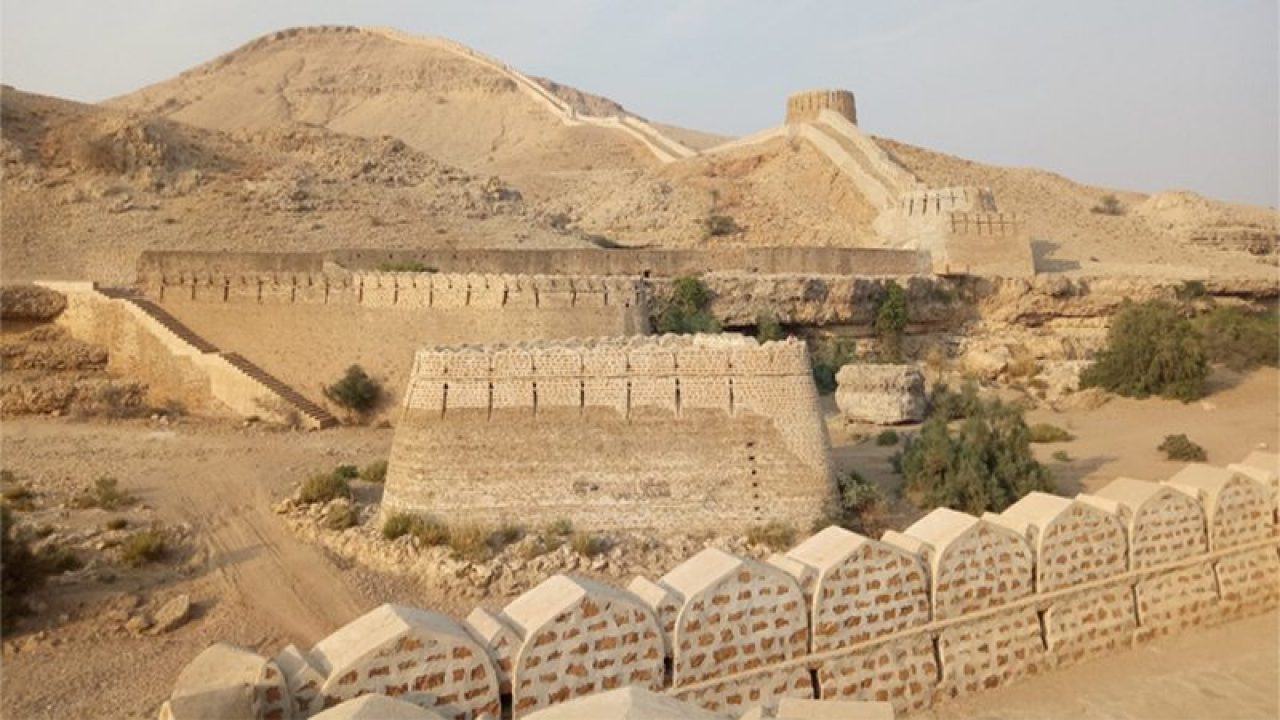Ranikot Fort or The Great Wall of Sindh is a historical Talpur fort in Jamshoro District, Sindh. Ranikot Fort is also known as The Great Wall of Sindh and is believed to be the world’s largest fort, with a circumference of approximately 32 kilometres (20 mi). The fort’s ramparts have been compared to the Great Wall of China.
The site was nominated in 1993 by the Pakistan National Commission for UNESCO world heritage status, and has since been on the tentative list of UNESCO World Heritage Sites. The fort is listed as a historical site under the Antiquities Act, 1975 and its subsequent amendments, and is provided protection.
Location :
Ranikot Fort is 90 kilometres to the north of Hyderabad. There is also an easy access of about an hour’s journey from Karachi to Sann on the Indus Highway. Moreover a diversion road, starting a little distance away from Sann, the nearest town. It leads to the fort along a rugged 21 kilometres road and reaches the eastern gate of the fort, known as Sann Gate. Sann is a rail head on the Kotri-Larkana line of the Pakistan Railway. The fort is inside the Kirthar National Park, the second largest national park in Pakistan.
History of Rani Kot Fort :
Sindh archaeologists agree that the great fort was built under the Talpurs during the administration of Prime Minister Nawab Wali Muhammed Leghari in the 17th century. The extensive structure was reinforced around 1812. Formed the last capital of the Amirs of Sindh before they were bought under the control of the British Empire who invaded the fort.
Restoration works were undertaken on the fort, particularly on the Sann Gate complex, the fortification wall extending south including the mosque and the small Meeri fort or palace within the main fort. These were undertaken by the Archaeology department of Pakistan.
Overview on Ranikot Fort:
The massive Ranikor Fort is 31 kilometers. The fort has four rhomboid-shaped entry gates and is constructed in a zigzag pattern. Sann Gate, Amri Gate, Shah-Pere Gate, and Mohan Gate are the four gates of the Ranikot Fort. The Sann river cuts through two of the gates, one on each side. The first gate is on the western side and is difficult to approach because it is bordered by the river water.
Moreover there are two doors at the southern entry gate. Two niches with floral decorations and carved stones may be found inside the gates. The Sann gate is in good condition and may be scaled to the fort’s peak from either side for beautiful views of the surrounding landscape.
The Meeri can also be entered through this gate. It connects numerous desolate summits of the Kirthar hills along contours. Three of the many bastions that are scattered around the Ranikot fort’s wall have a semi-circular shape. The perimeter of the fort is naturally steep and mountainous in the north, with fort walls enclosing the other three sides. Furthermore there is a smaller fort within the larger fort called “Meeri Fort,”. Which is located approximately three kilometers from the Sann gate. It is said to have functioned as the palace of the Mir royal dynasty. Stone and lime mortar were used to erect the complete Ranikot fort structure.
How to get Ranikot Fort?
It take almost 3 hours to visit Ranikot Fort from Karachi. Which makes it a perfect weekend getaway for those living in the City of Lights. The distance from Hyderabad to Ranikot Fort is even shorter.
Moreover Ranikot Fort distance from Karachi: Approximately 261 kilometer via Karachi-Hyderabad Motorway and Indus Highway
Ranikot Fort distance from Hyderabad: Approximately 120 kilometer via Indus Highway and Ranikot Fort Road


Comment (0)